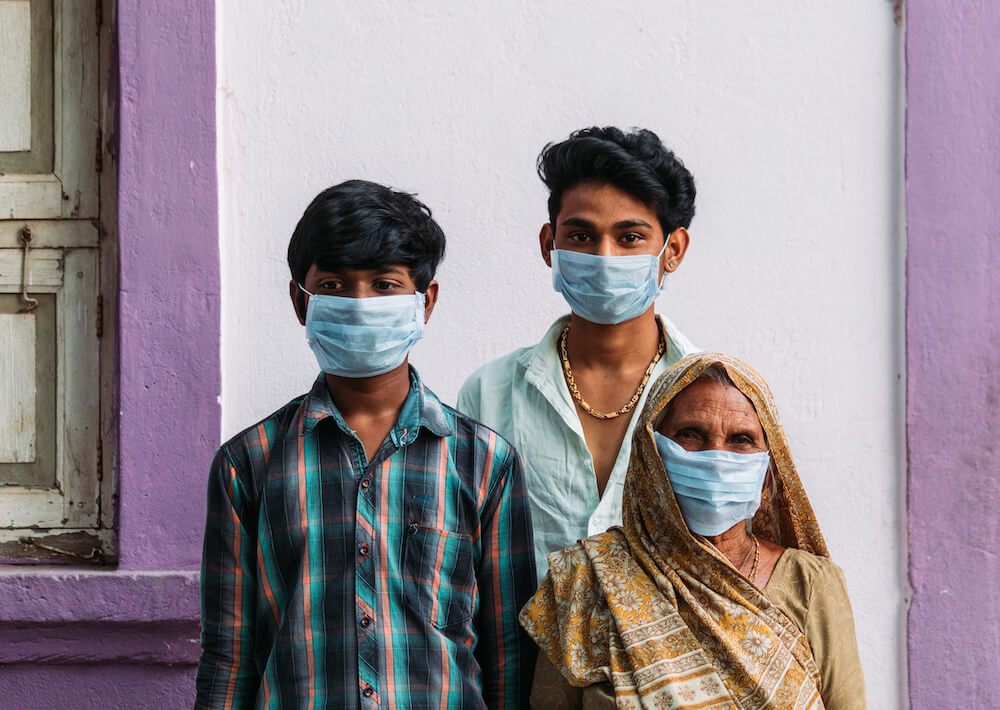
As it has done to much of the world, COVID-19 has shaken India and created a public health crisis that is testing the state’s capacity for emergency response. This response, in part, includes an 8-week, nation-wide lockdown. Soon after the lockdown was announced, India started to witness huge migratory flows from several cities.
Early estimates from the Center for Monitoring India’s Economy’s weekly tracker indicate that there has been a steep rise in the unemployment rate, with the overall rate rising to 23.4 percent and urban unemployment clocking in at over 30 percent. Coupled with a resource crunch, this has added to the migrants’ woes following the lockdown announcement. This has, in turn, lead to an exodus of migrant labor, particularly to the northern states of Uttar Pradesh and Bihar. While reverse migration of this nature is quite common during the annual harvest season, the current surge is a consequence of the lockdown, which has left the migrants worried, fearing a loss in livelihoods and a disruption to their income.
Migrant workers have been severely impacted by the lockdown and restrictions on their mobility.
Additionally, migrant workers – who constitute a significant chunk of the labor force in India – have been severely impacted by the lockdown and the accompanying restrictions on their mobility. Loss of livelihoods, uncertain job prospects post-lockdown, and an arrested income flow have affected both migrants and their households who rely on these remittances.
Government Measures to Help Vulnerable Groups, Including Migrants
Thirty-six hours after the lockdown announcement, the finance minister announced a relief package worth $24.4 billion and accompanying measures to help alleviate the adverse impact on the most vulnerable segments of the population. Foremost among these was the decision to provide relief to “80 crore poor Indians” under Pradhan Mantri Gareeb Kalyan Yojana (PMGKY), which aims to provide food security via the government’s public distribution system (PDS), and social security benefits including cash-based aid via Direct Benefit Transfers (DBT).
In addition, a slew of other relief measures have also been announced, such as home delivery of cash and pensions by India Post in some states, and further livelihood support. These measures constitute the first of potentially many relief packages announced by the government, with a focus on widening a safety net for the poorest of the poor.
Potential System-Wide Stumbling Blocks
While schemes like PMGKY are expected to bring relief to some segments, a significant proportion of beneficiaries are at risk of being excluded as a consequence of systemic inefficiencies and leakages. Let us take a look at potential stumbling blocks, and attempt to identify which segments of the population are at risk of getting excluded.
Accurate Information
The provision of relief measures is only as effective as the level of awareness surrounding them. Relief measures must be communicated clearly and widely, and easy access should be facilitated by the central and state governments. In the context of migrants, this will have positive public health ramifications associated with curbing unregulated mobility. As a result, provision of essentials such as income and nutrition – as well as effectively disseminating the means to access these benefits – are instrumental to managing the pandemic.
Different state governments in India have dealt with the risk of migrant exodus in markedly different ways. In Kerala, a focus on prompt and multilingual information dissemination using popular media like WhatsApp has been considerably effective, a testament to the importance of creating awareness around state response and relief efforts, which can help in reducing misinformation and thereby curbing migrant discontent. NGOs and community-based organizations that work closely with migrant workers, as well as agents from programs like the Haqdarshaks can play an instrumental role in the timely dissemination of information on schemes, as well as faster take-up, since they are often viewed as reliable by the people they service.
The JAM Trinity
The successful implementation of direct benefits under PMGKY hinges on the seamless functioning of the Jan Dhan-Aadhar-Mobile (JAM) trinity, and other digital infrastructure such as the Aadhar-enabled Payment System (AePS), bank mitras, adequate cash in ATMs and the capacity to continually service ATMs, and banks. This presents a massive operational and logistical challenge for the government and the financial services sector, especially given the restrictions on mobility.
Additionally, despite 1.1 billion operational bank accounts in India, nearly 500 million are not Aadhar-seeded. The JAM-reliant DBT approach, by design, fails to service those individuals and households without bank accounts, several of whom could be migrants or migrant households. Even among those that possess active accounts, it is often the case that access does not lead to usage. Moreover, with extremely low take-up levels of digital payments among these segments, this could result in their large scale exclusion from accruing any social security benefits.
Cash in the Bank Not Being Cash in Hand
Access to ATMs and bank mitras are both constrained by the pandemic and restrictions on mobility, as well as location. According to the Reserve Bank of India (RBI), only 45,000 out of India’s 230,000 (less than 20 percent) ATMs are in rural areas. Combined with a much lower than usual inflow of cash to rural branches (a source of cash for ATMs), rural India faces constraints to accessing benefits even when schemes are well-targeted. In addition, only 30 percent of the 1 million bank mitras in the country are currently operational, due to the travel restrictions accompanying the lockdown. Reports indicate that even though their services have been declared essential, local authorities have imposed restrictions on their movement. Many households in these rural areas are often migrant households, whose ability to access their benefits and remittances will be constrained by these logistical issues.
Migrants’ Unique Characteristics
Social security schemes run by state governments are often subject to domicile restrictions, resulting in the exclusion of migrant workers from benefits.
Social security schemes run by state governments are often subject to domicile restrictions, resulting in the exclusion of migrant workers from availing benefits. In addition, while federal schemes like the PMGKY are universal, migrant workers are more likely to be excluded due to the mobility associated with their livelihood, their participation in the informal sector, and their absence from associations’ rosters, which work towards ensuring outreach to the migrants. Furthermore, to complement the efforts of various NGOs working towards improving migrant visibility, substantial improvements in the collection and compilation of credible data on migrants is required from the government. This is also an important step towards making economic growth more inclusive for migrants.
The Long Run
The COVID-19 crisis presents us with problems that have implications beyond the lockdown and the health crisis. These questions pertain to the uncertainty surrounding employment prospects for migrant labor in the near term, compounded by a slowdown in the economy. The MSME sector is one of the worst hit, which affects both enterprises and employees, many of whom are migrant workers. Recent estimates indicate that over 26 percent of MSMEs have been impacted due to the pandemic and are left facing issues like a downturn in sales, liquidity concerns, and low cash flow. The gig economy and the tourism industry, which employs millions of migrant workers, has also been severely hit. These workers are largely excluded under health insurance and social security benefits.
The Way Forward
Addressing these issues would be a good starting point for the government in its efforts to support migrant workers and their dependents through this crisis. We outline some measures aimed at fixing these cracks in the system below.
- Firstly, the PMGKY has been announced as the first of multiple relief packages by the finance minister. While relief packages and social security systems must be strengthened, substantial efforts should be made to disseminate information about these schemes and utilizing service points such as bank mitras, community stores as cash in/out points, digital financial touch points, and PDS delivery agents to facilitate access for those individuals and households that are not formally included in the financial system, such as migrants.
- Secondly, the government must work more closely with private sector entities such as fintech companies and technology solution providers (TSPs) to facilitate the smooth functioning of the architecture that enables cash transfers and other forms of aid. For instance, AePS, the payment system used for state-run DBT, is reported to have a higher error rate than other payment systems, and is clocking a high rate of failure in DBT transfers, necessitating better solutions.
- Thirdly, migrant workers must be brought under the aegis of state-level social protection schemes by (temporarily) lifting domicile restrictions, and be assisted in availing benefits from central government schemes. In the short run, this requires a step up in efforts to identify migrants, by leveraging social networks and local organizations that work with migrant workers. On the systemic level, this calls for increased visibility of migrant labor through improved documentation as well as amendments to existing regulations.
- Fourthly, the government response in the coming months must outline a stimulus package to rejuvenate enterprises, and incentivize employers that typically employ migrant workers once economic recovery commences.
Finally, the crisis has also raised some interesting questions about crisis-induced migration trends, and lessons to be learned therein that merit further exploration. The current crisis has raised pertinent questions on the impact of reverse migration on the rural economy, changes in remittance flows, and household finance dynamics. It also presents opportunities for research to address the gaps in financial services targeted towards low-income households and workers engaged in the informal sector.









